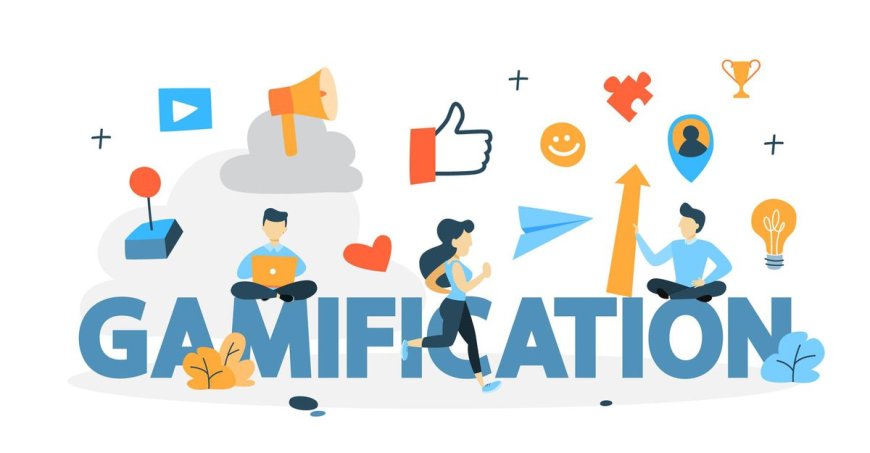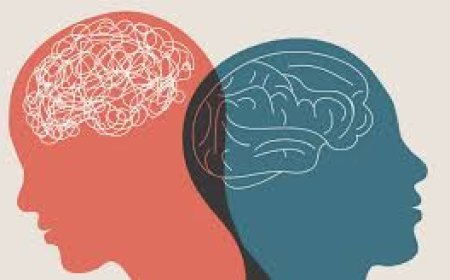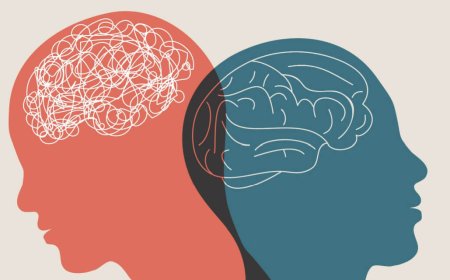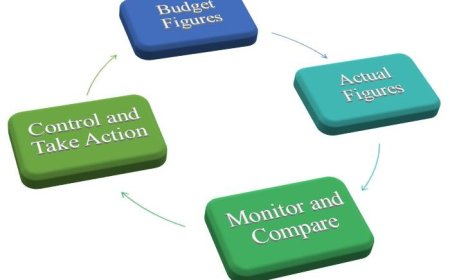Gamification
Discover the concept of gamification and how it is transforming industries by incorporating game mechanics to boost engagement, motivation, and learning. Explore its applications in education, marketing, health, and more!

Introduction
Gamification is the incorporation of game-like elements and mechanics into non-game contexts with the aim of enhancing user engagement, motivation, and participation. This concept has gained substantial prominence across various industries, including education, healthcare, marketing, and human resources, as organizations strive to harness the power of game design to drive desired behaviors and achieve specific goals. This essay explores the principles of gamification, its applications in different sectors, its benefits and challenges, and its future potential.
At its core, gamification leverages fundamental game design principles such as competition, achievement, and feedback. By integrating elements such as points, badges, leaderboards, and challenges, organizations can create environments that foster a sense of accomplishment and community. For instance, in education, gamified learning platforms encourage students to progress through courses by earning rewards for completing modules, thereby transforming the learning experience into an engaging journey. This not only enhances knowledge retention but also motivates students to take ownership of their learning.
In the healthcare sector, gamification has emerged as a powerful tool to promote healthy behaviors. Applications that reward users for tracking their fitness activities or adhering to medication schedules can lead to improved health outcomes. By employing game mechanics, healthcare providers can encourage patients to engage in preventive care and make healthier lifestyle choices, ultimately reducing healthcare costs and enhancing quality of life.
Moreover, in the realm of marketing, brands are increasingly using gamification to create immersive experiences that captivate consumers. Loyalty programs that offer points for purchases, social media challenges, and interactive campaigns can significantly boost customer engagement and brand loyalty. By tapping into the competitive spirit of consumers, organizations can foster deeper connections and drive sales.
However, the implementation of gamification is not without its challenges. Organizations must carefully design gamified systems to avoid potential pitfalls, such as superficial engagement or user fatigue. It is crucial to ensure that the game mechanics align with the desired outcomes and resonate with the target audience. Additionally, ethical considerations must be addressed, particularly in sectors like education and healthcare, where the stakes are high.
Looking towards the future, the potential of gamification appears boundless. As technology evolves, integrating augmented reality (AR) and virtual reality (VR) into gamified experiences could revolutionize user engagement across various sectors. By creating immersive environments that simulate real-world scenarios, organizations can enhance training, education, and consumer interactions.
Gamification represents a transformative approach to enhancing engagement and motivation across diverse fields. By understanding its principles and applications, organizations can unlock new pathways to achieve their goals, while also navigating the challenges that accompany this innovative strategy.
Understanding Gamification
At its core, gamification involves applying aspects of game design—such as points, badges, leaderboards, challenges, and rewards—to everyday tasks and activities. The intention is to leverage the intrinsic motivation that people often derive from gaming experiences. By introducing structured systems that create a sense of achievement, competition, and community, organizations aim to enhance user engagement and foster positive behavior.
Key Components of Gamification
-
Points: Points are a straightforward way to reward users for completing tasks or achieving specific goals. They serve as an immediate feedback mechanism and can spark friendly competition between users. The accumulation of points can also be tied to tiered levels of achievement, encouraging users to reach higher benchmarks as they progress.
-
Badges: Badges are visual tokens awarded for accomplishments and milestones. These serve as symbols of achievement that users can display, adding an element of recognition and status. When users earn badges, they experience a sense of pride and accomplishment, which can significantly enhance their commitment to the task at hand.
-
Leaderboards: Leaderboards create a competitive environment where users can compare their progress against others. They foster motivation through social comparison and can encourage users to strive for higher performance. By showcasing top performers, organizations can create role models within the community, inspiring others to elevate their efforts.
-
Challenges and Quests: Challenges provide users with specific tasks to complete, creating a sense of urgency and purpose. Quests are larger missions that may encompass multiple challenges, promoting deeper engagement. By framing tasks as quests, organizations can tap into narrative elements that make participation more captivating and immersive.
-
Rewards: Immediate and meaningful rewards (e.g., discounts, prizes) increase user motivation by providing tangible benefits for participation or achievement. These rewards can be tailored to align with the interests of the user base, ensuring that they resonate and enhance the overall experience.
The Broader Impact of Gamification
Beyond individual engagement, gamification can transform organizational culture by fostering collaboration and camaraderie among users. When individuals work together to achieve common goals, they build stronger relationships, leading to a more cohesive community. Furthermore, gamification can drive innovation by encouraging users to think creatively and explore new solutions to challenges.
When thoughtfully implemented, gamification can serve as a powerful tool for enhancing user engagement, driving performance, and cultivating a vibrant community. By harnessing the motivational elements inherent in game design, organizations can create a dynamic environment that not only meets objectives but also enriches the user experience.
Applications of Gamification
-
Education Gamification has made significant inroads in education, transforming the learning experience for students. Educational platforms employ game mechanics to make learning more enjoyable and interactive. Concepts such as earning points for completing assignments, receiving badges for mastering subjects, and using leaderboards to track progress can enhance student motivation and engagement. For example, platforms like Kahoot! utilize gamification to make quizzes competitive and fun, fostering an interactive classroom environment. By integrating storytelling elements and immersive scenarios, educators can create a richer learning experience that not only reinforces knowledge but also fosters critical thinking and collaboration among students.
-
Workplace and Human Resources In the corporate sector, gamification can improve employee training, productivity, and engagement. Companies design training programs that incorporate game elements, making learning more interactive and enjoyable for employees. For instance, organizations may create simulations or role-playing games to help employees navigate real-world scenarios. Moreover, gamification in performance management—through leaderboards, recognition systems, and rewards—can motivate employees to enhance their performance and achieve organizational goals. By fostering a culture of competition and collaboration, gamified systems can also enhance team dynamics and encourage innovative problem-solving, leading to a more agile and responsive workforce.
-
Marketing and Brand Loyalty Gamification is increasingly employed in marketing to boost customer engagement. Brands use game elements to encourage user participation in loyalty programs, social media interactions, and promotional campaigns. By creating fun, rewarding experiences, brands can enhance customer loyalty and drive repeat business. Starbucks, for example, employs a gamified loyalty program that rewards customers for purchases and offers bonuses for achieving specific milestones. This strategy not only incentivizes repeat purchases but also fosters a community around the brand, encouraging customers to share their experiences and engage with others.
-
Health and Wellness The health and wellness industries utilize gamification to encourage healthier behaviors. Mobile apps that promote fitness, diet tracking, and mental health often incorporate game mechanics to motivate users. For example, fitness apps such as Strava and Fitbit reward users for meeting fitness goals, completing challenges, and competing with friends. By integrating social elements, such as sharing achievements and participating in community challenges, these applications foster a sense of accountability and support, making the pursuit of health and wellness a more engaging and enjoyable journey. This approach not only helps individuals achieve their health goals but also cultivates a culture of wellness that benefits communities at large.
Gamification serves as a powerful tool across various sectors, enhancing engagement, motivation, and performance by leveraging the intrinsic human desire for achievement and recognition. As technology continues to evolve, the potential applications of gamification will undoubtedly expand, offering innovative solutions to age-old challenges.
Benefits of Gamification
-
Enhanced Engagement Gamification captivates users' attention by making mundane tasks entertaining. By transforming activities into engaging experiences through game mechanics, users are more likely to participate and remain committed to their goals. This heightened engagement can lead to increased productivity and satisfaction, as individuals feel a sense of accomplishment and enjoyment in their tasks. The integration of elements such as leaderboards, challenges, and rewards fosters a competitive spirit, encouraging users to push their limits and strive for excellence.
-
Improved Learning Retention In educational settings, gamification leverages optimal learning principles such as feedback and practice. Students are more likely to retain knowledge and skills when engaging with gamified learning environments that promote exploration and experimentation. By incorporating quizzes, simulations, and interactive scenarios, learners can apply theoretical concepts in practical situations, reinforcing their understanding. This hands-on approach not only enhances retention but also cultivates critical thinking and problem-solving skills, essential for success in today’s rapidly changing world.
-
Motivation and Behavior Change Gamification taps into intrinsic and extrinsic motivation, driving users to adopt desired behaviors. The satisfaction and social validation associated with earning points and badges can motivate users to pursue challenges they may otherwise avoid. Additionally, the use of progress tracking and achievement milestones provides a tangible measure of success, encouraging users to push through obstacles. This transformation of behavior is particularly beneficial in areas such as health and wellness, where gamified applications can inspire individuals to adopt healthier lifestyles through fun and interactive challenges.
-
Immediate Feedback The feedback provided through gamification allows users to assess their progress and make necessary adjustments. This can enhance performance in educational, professional, and personal contexts. By receiving instant feedback on their actions, users can identify strengths and areas for improvement, fostering a growth mindset. Furthermore, the iterative nature of gamified experiences encourages continuous learning and adaptation, empowering users to take ownership of their development.
-
Community and Collaboration Gamification often fosters a sense of community and collaboration among users. By incorporating social elements such as team challenges and cooperative tasks, individuals can work together towards common goals. This not only enhances the overall experience but also builds relationships and networks that can provide support and encouragement. The shared journey of gamification can lead to a vibrant community where users celebrate achievements together, thus reinforcing positive behaviors and sustained engagement.
The multifaceted benefits of gamification extend beyond mere entertainment, creating profound impacts on engagement, learning, motivation, feedback, and community dynamics. By strategically implementing gamification principles, organizations can transform their approaches to training, education, and behavior change, ultimately leading to more effective and enjoyable experiences for all participants.
Challenges of Gamification
-
Overjustification Effect There is a risk that external rewards can undermine intrinsic motivation, a phenomenon known as the overjustification effect. When users primarily engage with the system for rewards, they may lose interest in the task itself once the rewards are removed. This underscores the importance of designing gamified experiences that foster a genuine connection to the activity. By embedding elements that cultivate intrinsic motivation, such as personal growth or skill mastery, organizations can mitigate the risk of users disengaging once extrinsic incentives are withdrawn.
-
Inequality and Competition Competitive elements in gamification, such as leaderboards, can lead to feelings of inadequacy among users who may struggle to compete with others. This can disengage users who feel they cannot meet the standards set by the top performers. To counteract this, organizations should consider incorporating collaborative elements that promote teamwork and shared achievements, rather than solely focusing on individual competition. By fostering a community-oriented environment, organizations can enhance user engagement and satisfaction, ensuring that all participants feel valued regardless of their performance level.
-
Implementation Costs Designing and implementing a gamified system can require significant investment in time, resources, and expertise. Organizations must carefully evaluate whether the potential benefits outweigh the costs involved in creating an effective gamified experience. This includes not only the initial development but also ongoing maintenance and updates to keep the system relevant and engaging. A thorough cost-benefit analysis, alongside pilot testing, can provide valuable insights into the feasibility and sustainability of gamification initiatives.
-
Balancing Challenge and Skill The effectiveness of gamification relies on finding the right balance between challenge and user skill. If challenges are too difficult or too easy, users may become frustrated or disengaged, undermining the intended motivational effects. Employing adaptive learning techniques can help tailor challenges to individual skill levels, promoting a sense of accomplishment and progression. Furthermore, organizations should regularly solicit user feedback to refine the balance of challenges and ensure that the gamified experience remains engaging and rewarding.
-
Sustaining Engagement Another significant challenge is maintaining user engagement over time. Initial excitement can wane, leading to a decline in participation. To address this, organizations must continuously innovate and refresh gamified elements. Regular updates, new challenges, and evolving rewards can keep the experience dynamic and engaging. Additionally, integrating user-generated content can empower participants, allowing them to contribute to the gamified environment and fostering a sense of ownership that enhances long-term engagement.
By acknowledging and addressing these challenges, organizations can create gamified experiences that not only motivate users but also foster a deeper connection to the tasks at hand.
The Future of Gamification
As understanding of gamification grows, its applications are likely to expand across various domains. Emerging technologies such as virtual reality (VR) and augmented reality (AR) offer new possibilities for immersive gamified experiences. Imagine a future where educational institutions utilize VR to create engaging simulations for complex subjects, allowing students to explore historical events or scientific principles in a fully interactive environment. Similarly, AR can enhance real-world interactions, enabling users to engage with their surroundings through gamified layers of information, transforming mundane tasks into exciting challenges.
The integration of artificial intelligence (AI) into gamification strategies promises to revolutionize user engagement. By analyzing individual preferences and behaviors, AI can tailor experiences to meet the unique needs of each user. For instance, a fitness application could adapt its challenges based on a user’s performance and motivation levels, ensuring that the experience remains both rewarding and achievable. This level of personalization not only enhances user satisfaction but also fosters a deeper connection between the user and the gamified system.
However, as organizations adopt gamification, there is an imperative to consider the ethical implications that accompany this evolution. Privacy and data security must remain at the forefront of gamification initiatives. Users should feel confident that their data is being handled responsibly and transparently. Furthermore, the potential for over-reliance on gamified systems raises concerns about intrinsic motivation. It is crucial to strike a balance between external rewards and internal satisfaction, ensuring that users engage with the content for the right reasons.
To navigate these challenges, an emphasis on thoughtful design that prioritizes user well-being will be paramount. Designers must create gamified experiences that not only motivate but also promote healthy habits and positive behaviors. This includes incorporating elements that encourage collaboration and social interaction, fostering a sense of community among users.
Ultimately, the future of gamification holds immense potential. By leveraging advanced technologies and adhering to ethical standards, organizations can create meaningful experiences that enrich the user journey, drive engagement, and contribute positively to various sectors. As we move forward, a commitment to ethical gamification will be essential in shaping a landscape that benefits both users and organizations alike.
Conclusion
Gamification represents a powerful intersection of game design and real-world applications, offering innovative ways to engage users across diverse sectors. By understanding the underlying principles of gamification and addressing potential challenges, organizations can harness its potential to enhance motivation, learning, and behavior change. As the landscape of gamification continues to evolve, its role in shaping user experiences and driving positive outcomes will become increasingly significant, paving the way for a future that combines the best of gaming with everyday activities.
The integration of gamification into various fields—such as education, healthcare, marketing, and employee training—demonstrates its versatility and effectiveness. In education, for instance, gamified learning environments can transform traditional curricula into interactive experiences, fostering deeper engagement and retention of knowledge. By incorporating elements like point systems, badges, and leaderboards, educators can motivate students to take ownership of their learning journey, encouraging collaboration and healthy competition.
In the realm of healthcare, gamification can play a pivotal role in promoting healthier lifestyles. Apps that reward users for completing fitness challenges or adhering to medication schedules not only enhance patient compliance but also create a sense of community among participants. By leveraging social elements and real-time feedback, healthcare providers can inspire individuals to make lasting behavioral changes, ultimately leading to improved health outcomes.
Moreover, in the corporate sector, gamification can revolutionize employee training and development. By transforming mundane training sessions into engaging, game-like experiences, organizations can enhance knowledge retention and skill acquisition. Employees are more likely to participate actively when they are rewarded for their progress and achievements, fostering a culture of continuous improvement and innovation.
However, as organizations embrace gamification, it is essential to remain mindful of the potential pitfalls. Overemphasis on competition may lead to stress or disengagement among users. Therefore, a balanced approach that prioritizes intrinsic motivation and personal growth is crucial for sustainable success. By focusing on user-centric design and incorporating feedback mechanisms, organizations can create gamified experiences that resonate with their audience.
The future of gamification is bright, with its potential to drive engagement and foster positive change across various sectors. As technology advances and our understanding of human behavior deepens, the application of gamification will continue to expand, offering new opportunities for organizations to connect with users in meaningful ways. By embracing this innovative approach, we can create environments that not only entertain but also empower individuals to achieve their goals and transform their lives.
What's Your Reaction?
 Like
0
Like
0
 Dislike
0
Dislike
0
 Love
0
Love
0
 Funny
0
Funny
0
 Angry
0
Angry
0
 Sad
0
Sad
0
 Wow
0
Wow
0





































